Italy, a country located in Southern Europe, is renowned for its rich history, stunning landscapes, and vibrant culture. Known for its contributions to art, architecture, fashion, and cuisine, Italy is a dream destination for travelers seeking to experience the beauty and charm of the “Bel Paese” (Beautiful Country). From the majestic ruins of ancient Rome to the romantic canals of Venice, Italy offers an unforgettable journey through time and tradition. This blog explores Italy’s geography, history, culture, cuisine, and must-visit destinations, providing a comprehensive look at this captivating country.
Table of Contents
Geography
Italy is a boot-shaped peninsula that extends into the Mediterranean Sea, covering an area of approximately 301,340 square kilometers. It is bordered by France, Switzerland, Austria, and Slovenia to the north, while its southern coastline is surrounded by the Mediterranean, Tyrrhenian, Adriatic, and Ionian Seas. The country is characterized by its diverse landscapes, including the majestic Alps in the north, rolling hills in Tuscany, and beautiful coastal regions along the Amalfi Coast.
Italy is divided into 20 regions, each with its own unique culture, history, and traditions. The regions are known for their distinct dialects, cuisines, and architectural styles, making each area a fascinating destination for exploration.
Regions of Italy
Italy is divided into 20 regions, not states. These regions have varying degrees of autonomy and are further subdivided into provinces and metropolitan cities. Here is a list of the 20 regions of Italy:
| No | Name | Capital |
|---|---|---|
| 1 | Abruzzo | L’Aquila |
| 2 | Aosta Valley | Aosta |
| 3 | Apulia | Bari |
| 4 | Basilicata | Potenza |
| 5 | Calabria | Catanzaro |
| 6 | Campania | Naples |
| 7 | Emilia-Romagna | Bologna |
| 8 | Friuli Venezia Giulia | Trieste |
| 9 | Lazio | Rome |
| 10 | Liguria | Genoa |
| 11 | Lombardy | Milan |
| 12 | Marche | Ancona |
| 13 | Molise | Campobasso |
| 14 | Piedmont | Turin |
| 15 | Sardinia | Cagliari |
| 16 | Sicily | Palermo |
| 17 | Tuscany | Florence |
| 18 | Trentino-Alto Adige | Trento |
| 19 | Umbria | Perugia |
| 20 | Veneto | Venice |
A Brief History of Italy
Italy’s history is a tapestry of diverse cultures, civilizations, and artistic achievements. The region was inhabited by ancient peoples such as the Etruscans and the Romans, with the latter establishing one of the most influential empires in history. The fall of the Western Roman Empire in the 5th century marked the beginning of the Middle Ages, during which Italy was divided into numerous kingdoms and city-states.
The Renaissance, which began in the 14th century, was a period of extraordinary cultural revival in Italy. It saw the emergence of renowned artists such as Leonardo da Vinci, Michelangelo, and Raphael, who transformed the fields of art, architecture, and science. Italy became a center of learning and innovation, influencing the rest of Europe.
In the 19th century, the country underwent a process of unification, culminating in the establishment of the Kingdom of Italy in 1861. The country experienced significant political and social changes throughout the 20th century, including the rise and fall of fascism, World War II, and the eventual establishment of the Italian Republic in 1946. Today, Italy is a democratic republic known for its rich cultural heritage and contributions to global civilization.
Top Ten Most Famous Places to Visit in Italy
1. Rome
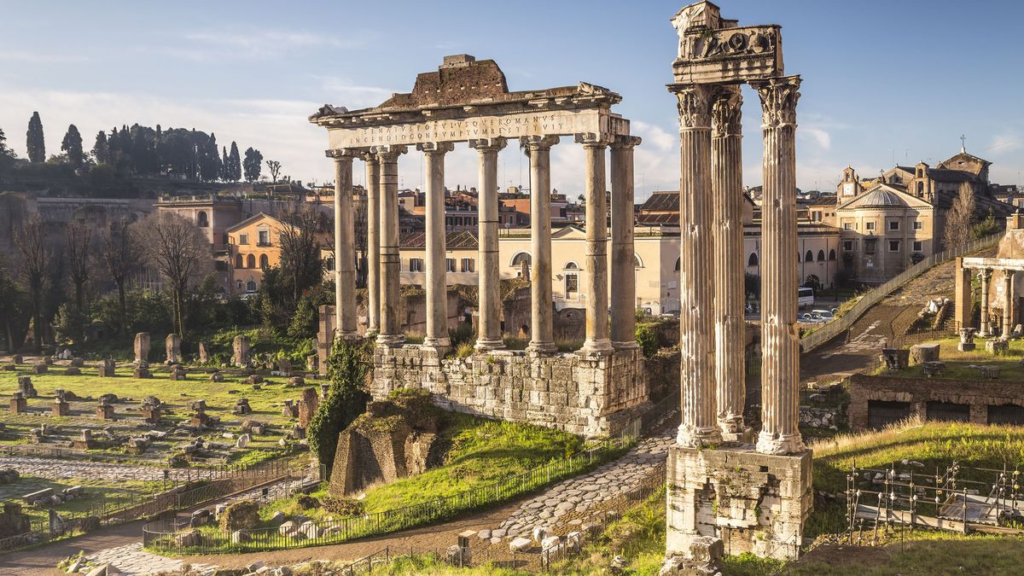
Rome, the capital city of Italy, is a treasure trove of history and culture. Visitors can explore iconic landmarks such as the Colosseum, Roman Forum, and Pantheon, which showcase the grandeur of ancient Rome. The Vatican City, home to St. Peter’s Basilica and the Sistine Chapel, is another must-visit destination for its incredible art and religious significance. With its charming streets, vibrant atmosphere, and delicious cuisine, Rome is a city that captures the heart of every traveler.
2. Venice

Venice, known as the “City of Canals,” is a unique and romantic destination built on a network of islands. The city’s iconic canals are lined with historic buildings and charming gondolas, creating a picturesque setting. Visitors can explore St. Mark’s Square, the Doge’s Palace, and the Rialto Bridge, all of which reflect the city’s rich history and artistic heritage. A gondola ride through the canals is a quintessential Venice experience, offering a glimpse into the city’s enchanting atmosphere.
3. Florence
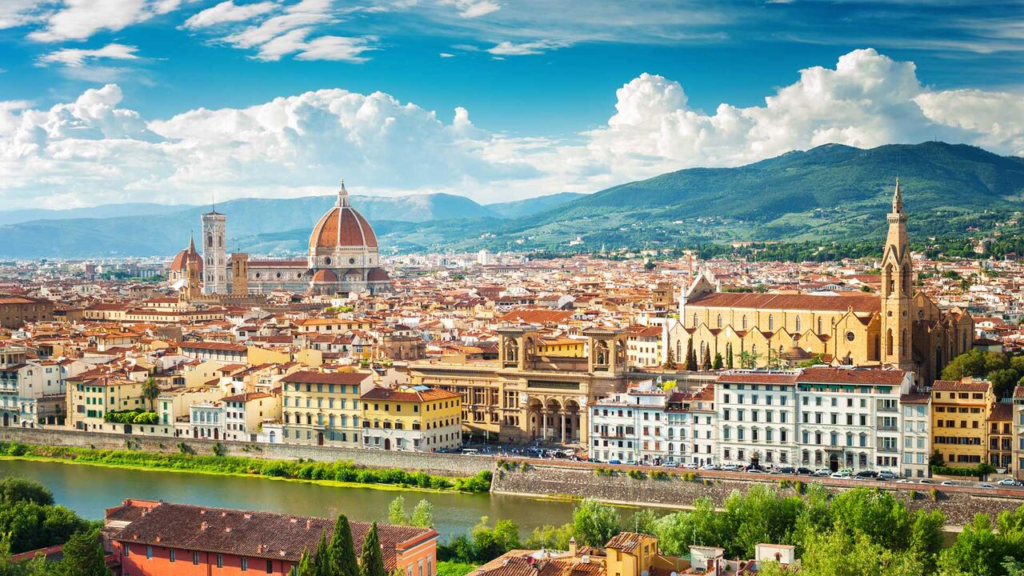
Florence, the capital of Tuscany, is renowned for its stunning Renaissance art and architecture. The city is home to masterpieces by artists such as Botticelli, Michelangelo, and Leonardo da Vinci. The Uffizi Gallery and the Accademia Gallery are must-visit attractions for art lovers. Florence’s stunning cathedral, the Duomo, with its iconic dome designed by Brunelleschi, is a symbol of the city. The picturesque streets, vibrant markets, and delicious Tuscan cuisine make Florence a delightful destination.
4. Pisa
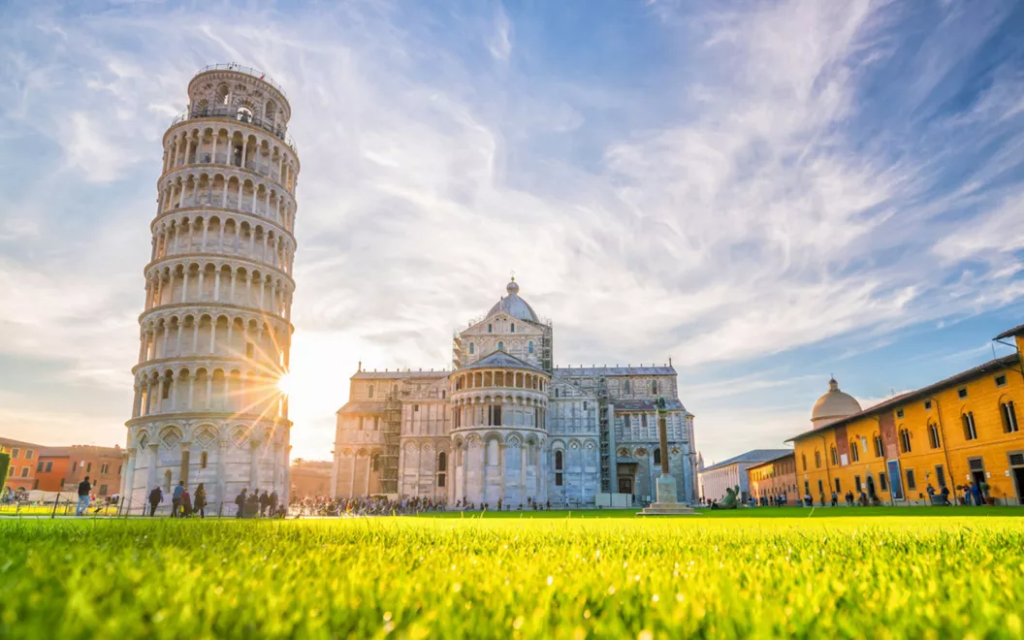
Pisa is famous for its iconic Leaning Tower, a UNESCO World Heritage site. Visitors can climb the tower for panoramic views of the city and explore the beautiful Piazza dei Miracoli, which also features the Pisa Cathedral and Baptistery. The city’s rich history dates back to the Roman era, and its charming streets and picturesque canals provide a glimpse into its past. Pisa is an essential stop for anyone traveling through Tuscany.
5. Amalfi Coast

The Amalfi Coast is a stunning stretch of coastline known for its dramatic cliffs, colorful villages, and breathtaking views. Towns like Positano, Amalfi, and Ravello are perched along the coast, offering visitors a chance to explore picturesque streets, relax on beautiful beaches, and savor delicious Mediterranean cuisine. The scenic drive along the coast is an unforgettable experience, showcasing the natural beauty and charm of this iconic region.
6. Cinque Terre
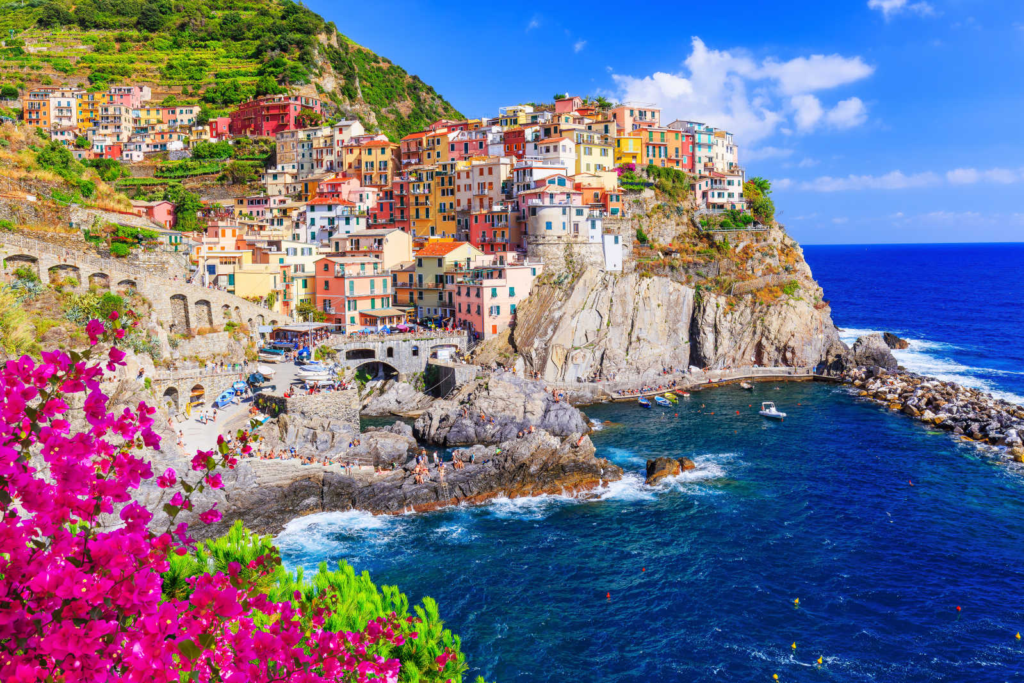
Cinque Terre is a collection of five picturesque villages located along the Ligurian coast. Each village is characterized by colorful houses, steep cliffs, and stunning views of the Mediterranean Sea. Visitors can hike between the villages along scenic trails, enjoy fresh seafood at local restaurants, and relax on beautiful beaches. Cinque Terre is a UNESCO World Heritage site and a paradise for nature lovers and outdoor enthusiasts.
7. Milan

Milan, Italy’s fashion capital, is known for its vibrant culture, stylish boutiques, and stunning architecture. The iconic Duomo di Milano, a magnificent Gothic cathedral, is a must-visit landmark. Milan is also home to the famous opera house, La Scala, and the renowned painting, The Last Supper, by Leonardo da Vinci. The city’s trendy neighborhoods offer a blend of modernity and tradition, making Milan a dynamic destination for travelers.
8. Sienna
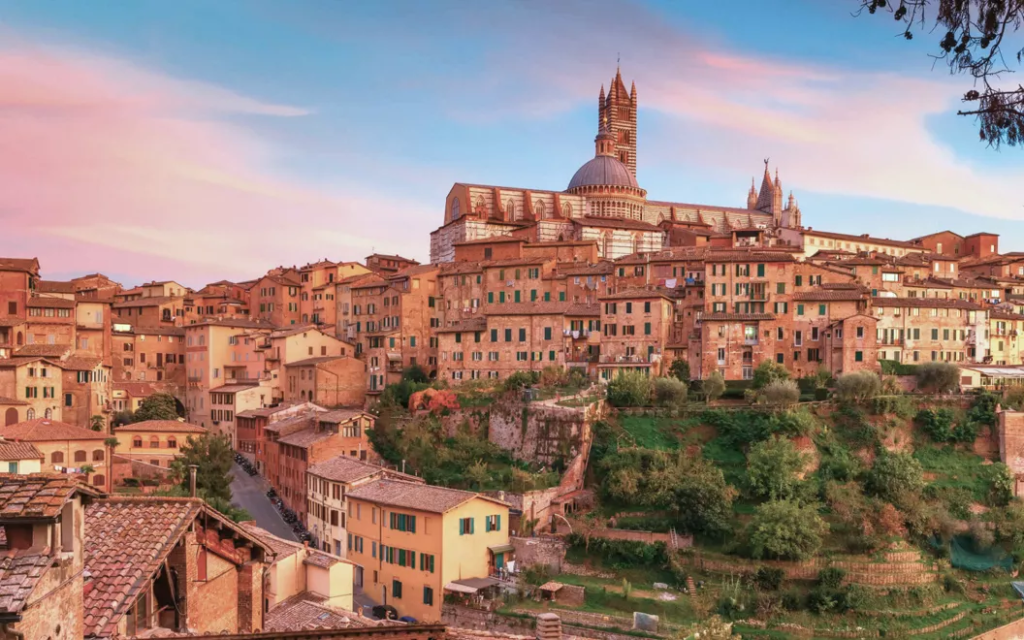
Sienna is a medieval city known for its well-preserved architecture and rich history. The city’s historic center is a UNESCO World Heritage site, featuring narrow streets, beautiful piazzas, and the stunning Siena Cathedral. The Palio di Siena, a traditional horse race held twice a year, is a highlight of the city’s cultural calendar. Sienna’s charming atmosphere and rich traditions make it a captivating destination for visitors.
9. Pompeii
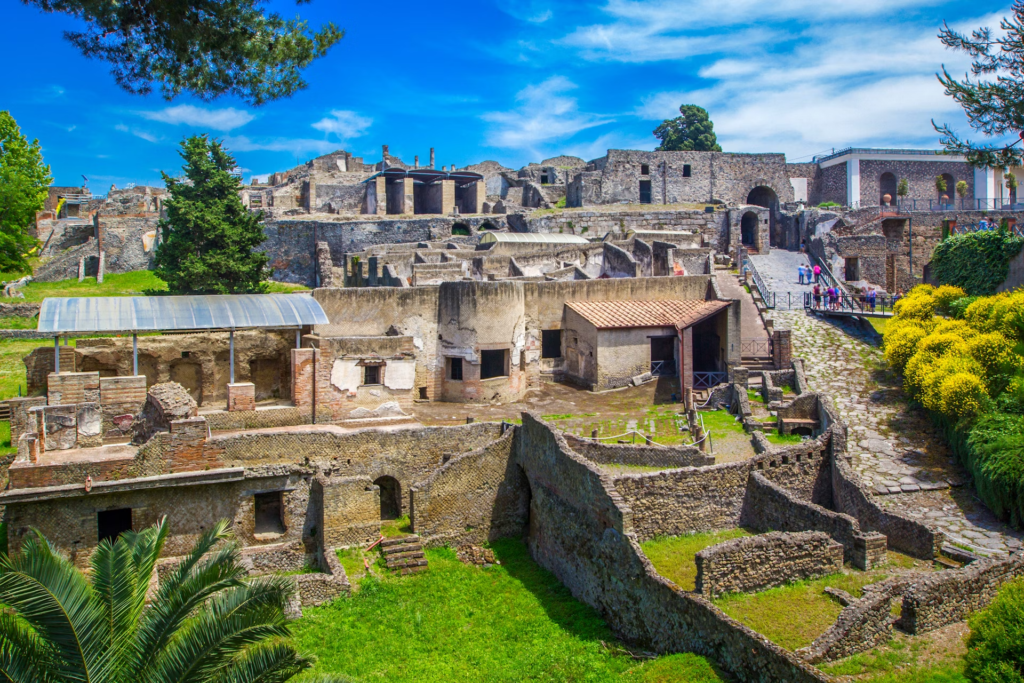
Pompeii is an ancient Roman city frozen in time by the eruption of Mount Vesuvius in 79 AD. The archaeological site offers a fascinating glimpse into daily life during the Roman Empire, with well-preserved ruins, mosaics, and frescoes. Visitors can explore the streets, houses, and public buildings of this once-thriving city, making Pompeii a must-visit destination for history enthusiasts.
10. Verona

Verona, the city of Romeo and Juliet, is famous for its romantic ambiance and historic architecture. The city’s well-preserved Roman Arena is a major attraction, hosting opera performances and concerts during the summer months. Visitors can also explore Juliet’s House, with its iconic balcony, and wander through the charming streets of the historic center, a UNESCO World Heritage site. Verona’s rich literary heritage and beautiful scenery make it a delightful destination.
Culture
Italian culture is characterized by its rich traditions, artistic achievements, and strong family values. The country is renowned for its contributions to art, literature, music, and fashion. Italian cuisine, known for its regional diversity, is a cornerstone of the culture, with dishes varying from region to region. Family gatherings and communal meals play a significant role in Italian life, reflecting the importance of relationships and community.
Italy’s festivals, such as Carnevale, Palio di Siena, and La Notte Bianca, showcase the country’s vibrant cultural heritage. The warm hospitality of the Italian people, along with their passion for art and tradition, creates a welcoming atmosphere for visitors.
Festivals
Italy is home to numerous festivals that celebrate its rich cultural heritage. The Venice Carnival is famous for its elaborate masks and costumes, attracting visitors from around the world. The Palio di Siena is a historic horse race held twice a year, showcasing the city’s traditions and rivalries. Other notable festivals include the Umbria Jazz Festival, the Festa della Madonna Bruna in Matera, and the Infiorata di Noto, where streets are adorned with stunning flower carpets. These festivals provide visitors with a unique opportunity to immerse themselves in Italy’s vibrant culture.
Cuisine
Italian cuisine is renowned worldwide for its delicious flavors, fresh ingredients, and regional diversity. Traditional Italian dishes often emphasize simplicity, allowing the quality of the ingredients to shine. Olive oil, fresh herbs, pasta, tomatoes, and cheese are staples in Italian cooking, contributing to the country’s culinary excellence.
Top Eight Most Famous Foods of Italy


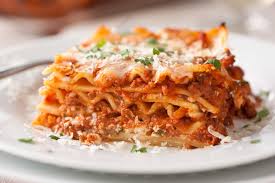





Economy
Italy has a diverse and developed economy, ranking among the largest in the world. The country’s economy is characterized by a mix of agriculture, manufacturing, and services. Italy is known for its high-quality products, including luxury goods, fashion, automobiles, and machinery. The “Made in Italy” brand is synonymous with quality and craftsmanship, attracting consumers worldwide.
Tourism is a significant contributor to the Italian economy, with millions of visitors flocking to experience the country’s rich history, art, and culture. The agricultural sector remains important, with Italy being a leading producer of wine, olive oil, and various agricultural products. The Italian economy continues to evolve, focusing on innovation and sustainability to meet global challenges.
Future Prospective
Italy’s future will likely be shaped by a focus on sustainability, technological innovation, and preserving its cultural heritage. The government aims to support local businesses and encourage investments in green technologies and renewable energy. As tourism continues to thrive, Italy will work towards promoting sustainable practices to protect its natural and cultural treasures.
The country’s rich traditions, vibrant culture, and culinary excellence will remain central to its identity, ensuring that Italy continues to be a beloved destination for travelers from around the globe. The balance between modernization and preservation will play a crucial role in shaping Italy’s future, allowing it to maintain its unique charm while adapting to the changing world.
Conclusion
Italy is a captivating country that offers a wealth of experiences for travelers. From the historical wonders of Rome to the picturesque landscapes of the Amalfi Coast, Italy is a destination that enchants visitors with its beauty, culture, and cuisine. The country’s rich history, artistic achievements, and warm hospitality create a unique atmosphere that lingers in the hearts of those who visit. Whether you’re savoring authentic pasta in a trattoria, exploring ancient ruins, or wandering through charming villages, Italy promises unforgettable memories and experiences that will last a lifetime.
let’s enjoy few years on earth with peace and happiness….✍🏼🙏

